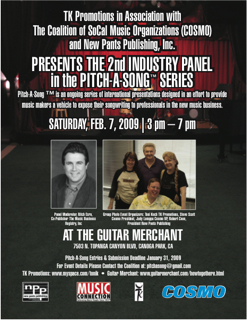For all of you current or incipient new media producers, writers, directors, etc out there, let me offer the first rule of new media.
Be very clear from the start that you, and you alone own your project.
I know, it might seem obvious that you own it, but as your project continues there will be those who think, even demand, that they own all or part of it. It is becoming a common occurrence in new media, just as it was in traditional media. Common enough that I was compelled to write this post.
Typically, the scenario plays out like this…
You get a great idea and start to develop a project. As your project starts to gain steam people, both friends and strangers, will start to offer their help. They might offer editing for a video show or “free” studio time for an audio podcast. They might offer to write sketches or bumpers or essays or music.
Soon, your project starts to garner some attention. Perhaps the press does a small story on your show or a traditional media producer comes calling. The is where the troubles begin.
It is very important to remember that success changes everything. Money changes things even more. Once either of these two things start to appear, people will change, too. People who freely offered their time or space will start to feel possessive of the project. They will want a say in any deal-making, try to control the content of the project or even try to do deals of their own without consulting you at all. With enough effort, they could take your project away from you.
Welcome to the world of a successful new media producer.
How do you protect yourself against having to face these ownership issues? Get it all in writing, from the very start. I don’t care if you think you are just doing something for fun. Many fun things quickly turn into a business. Above all, make it very clear that anyone who does work for you, whether writing, acting, editing, is working FOR you. At no time should they assume any percentage participation in the project. Sure, this might be something you negotiate later, but they don’t need to know that. Do yourself a favor and never, ever even mention that they might own part of the show. You want no misunderstandings and now is the time to make that very clear. They are “helping you out”, “working with you”, “working for you”, but they are not co-creators, co-writers, or co-owners.
If they are volunteering their work, be very clear that, while you would love to hire them full time if and when the show starts to make money, there is no guarantee that will ever happen. The fact is, if you sell your show, the company who buys it will have final say over anyone who works in it, not you. So don’t offer anything you can’t assuredly provide.
The trouble is, in new media, just like in traditional media, there are plenty of people willing, nay hoping, to ride your coattails and turn your project into their ticket to success. Certainly everyone you meet will not be thinking this way, but here in Los Angeles, it can be a very common attitude. You only need to read the daily entertainment journals and the tabloids to find evidence of that, witnessed by the current lawsuit against Survivor producer Mark Burnett. By making clear your relationship and their relationship to the show or project, you can quickly short circuit these attempts.
In the end, I would even go so far as putting any understanding in writing and having it signed and notarized. It might seem silly when you are just a couple of buds “putting on a show”, but I can guarantee you that when money enters into the equation, you will be glad you did.
Remember, success and money changes everything. Don’t be fighting a battle over ownership, when you should be enjoying your success.
 On February 7, 2009, TK Promotions in association with the
On February 7, 2009, TK Promotions in association with the ![Reblog this post [with Zemanta]](http://img.zemanta.com/reblog_e.png?x-id=d7d7c482-9ef7-4436-923f-f6fbb99d6d84)
![Reblog this post [with Zemanta]](http://img.zemanta.com/reblog_e.png?x-id=936fc44e-b965-4786-8319-da702ddc024f)



